JK&MK: We would like to take this opportunity to wish you all a very merry Christmas and a happy, productive and healthy new year!




 JK: Well, after our rather text-heavy and earth-shattering, four part educational series on Rwanda, I will spare your eyes and keep this short.
JK: Well, after our rather text-heavy and earth-shattering, four part educational series on Rwanda, I will spare your eyes and keep this short.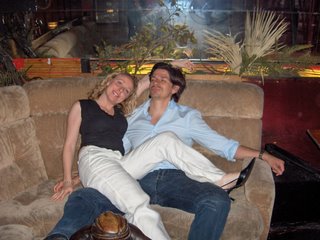
The killing swiftly spread from Kigali to all corners of the country. Between April 6th and mid-July 1994, a genocide of unprecedented swiftness is estimated to have left between 800,000 to 1,071,000 Tutsis and moderate Hutus dead at the hands of organised bands of militias.
Most of the victims were killed in their villages or in towns, often by their neighbours and fellow villagers. The militia members mostly killed their victims by chopping them up with machetes, although some army units used rifles. In some towns the victims were forcibly crammed into churches and school buildings, where Hutu extremist gangs massacred them. In June about 3,000 Tutsis sought refuge in a Catholic church in Kivumu. Local Interahamwe then used bulldozers supplied by the local police to knock down the church building. People who tried to escape were hacked down with machetes.
For the rest of the story, please read "Leave None to Tell the Story: Genocide in Rwanda" by Human Rights Watch or read Wikipedia's background on the Rwandan Genocide.
 MK: Hasselt, Hasselt, Hasselt.....what a strange adventure! Once a year, this town in North Eastern Belgium hosts the Jeneverfeesten (Genever Festival). In other words, yet another opportunity for Flemish Belgians to drink copious amounts of alcohol and do peculiar things. Like, for example, a waiter competition as shown in the photo above. From what I can tell, this involves a bunch of males and females walking around the town balancing a bottle of Jenever and its associated glassware...I still can't explain the whole point to it but it is fun to watch!
MK: Hasselt, Hasselt, Hasselt.....what a strange adventure! Once a year, this town in North Eastern Belgium hosts the Jeneverfeesten (Genever Festival). In other words, yet another opportunity for Flemish Belgians to drink copious amounts of alcohol and do peculiar things. Like, for example, a waiter competition as shown in the photo above. From what I can tell, this involves a bunch of males and females walking around the town balancing a bottle of Jenever and its associated glassware...I still can't explain the whole point to it but it is fun to watch!
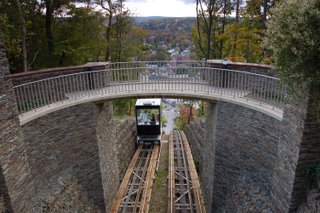 MK: After much protest from my (JK says: "supremely macho") hubby, I finally convinced him to take me to Spa. Little do most people know that the word "spa" -- and all the fun associated with it -- comes from this Belgian town.
MK: After much protest from my (JK says: "supremely macho") hubby, I finally convinced him to take me to Spa. Little do most people know that the word "spa" -- and all the fun associated with it -- comes from this Belgian town. JK: With the UNDP imploring (well, perhaps more accurately "calling") Melanie to begin a one year contract in Rwanda at the end of October, we decided it was "now or never" to make a short trip back home to Ottawa (Canada, not Illinois). So, at literally the very last minute, we hopped on a plane in Brussels, suffered through the indignities of London's Heathrow (bring on the new Terminal 5 because the current state of this airport is tragic!), and eventually made it back home.
JK: With the UNDP imploring (well, perhaps more accurately "calling") Melanie to begin a one year contract in Rwanda at the end of October, we decided it was "now or never" to make a short trip back home to Ottawa (Canada, not Illinois). So, at literally the very last minute, we hopped on a plane in Brussels, suffered through the indignities of London's Heathrow (bring on the new Terminal 5 because the current state of this airport is tragic!), and eventually made it back home.
Despite the abbreviated time in Ottawa, we consider ourselves lucky to have seen so many "critical friends", titans, and legends. We accomplished tons: from the Scotsman's surprise birthday dinner, poker with Ottawa's "man-mountains", lunches with legends, elbow drops with NHS'ers, dinner with the Baron and his Italian wife, re-uniting with the Duce and co., dining and debating with the Perrakides, seeing Will sell apples for his Beaver colony, thanksgiving with the Illingworths (amongst a few other family get-togethers), and of course our impromptu wedding reception. Seeing so many new babies (all cute of course -- don't worry moms and dads!) was quite a shock for JK in particular. All this and my wife still managed to - unbeknownst to me - get a pedicure at the York Street Spa and stock up on all the necessary Aveda, Lancome, and MAC products that are crucial to her existence in Rwanda.
Toronto was also great, but the visit was far too short (one night only). The city is so interesting, but we did not have time to even scratch the surface. Still, we received excellent hospitality from my bro, "Iasonas", and his wife (Caro)'lyne. They too have a great pad north of the beaches and south of -- where else? -- the Danforth. In TO we hung with the Nico-Man and Mara, downed sushi with CK, coffee with Mel's older brother Mike, and guzzled margaritas with Dawn, my bro/sis-in-law and the Nezanator/Rob.
The reception in Ottawa, expertly organised by none other than -- how did you guess? -- Mélanie (actually, with the tremendous help of the Kootch), was a true highlight. About one hundred people came to gobble on nibblies, exchange banter and have some laughs. We were honoured that so many people came to see us on what was a Thanksgiving long weekend!!!
For photos of our wedding reception in Ottawa, click here.
For scenic photos of Ottawa, click here.
For silly photos with friends, click here.
For fun photos with family, click here.
 JK: As mentioned above, Mel had been back to Canada as recently as February 2006 (7 months ago), but it was JK's first time home since moving to Belgium a full two years earlier (October 2004). This led to some reverse culture shock, including:
JK: As mentioned above, Mel had been back to Canada as recently as February 2006 (7 months ago), but it was JK's first time home since moving to Belgium a full two years earlier (October 2004). This led to some reverse culture shock, including:
 On 15 and 16 October, the world came together to stand up and remind their governments that promises to achieve the Millennium Development Goals (MDGs) and help the billions living in extreme poverty must be kept.
On 15 and 16 October, the world came together to stand up and remind their governments that promises to achieve the Millennium Development Goals (MDGs) and help the billions living in extreme poverty must be kept.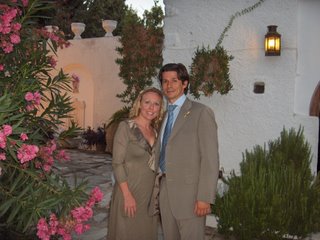 All the noise and chatter have stopped. You cannot hear a sound. Melanie and John have gone into hiding. They are busy preparing for their next adventures and changes to their lives. Please come back soon and you will learn where they have gone, what they have been up to, what and whom they have seen, and where they are going.
All the noise and chatter have stopped. You cannot hear a sound. Melanie and John have gone into hiding. They are busy preparing for their next adventures and changes to their lives. Please come back soon and you will learn where they have gone, what they have been up to, what and whom they have seen, and where they are going.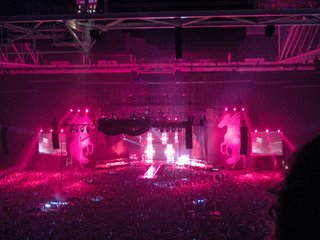 MK: Thanks to Janet (one of NART's original members), my life long dream and passion (well, one of them at least!) came true on Monday night. I ventured to Amsterdam and saw Madonna's Confessions Tour.
MK: Thanks to Janet (one of NART's original members), my life long dream and passion (well, one of them at least!) came true on Monday night. I ventured to Amsterdam and saw Madonna's Confessions Tour.
 For those interested in beer, there are very few countries that can compete with Belgium for the production of quality brew.
For those interested in beer, there are very few countries that can compete with Belgium for the production of quality brew. 
 To celebrate we convened some very fine folk a few days later for a drink at -- where else? -- the Grapevine in Place Lux (formerly known as "Place Petros", until the bugger picked up and moved to London). The sun was shining (we're having a bit of an Indian Summer -- and we deserve it after the August we had) which made everyone particularly giddy.
To celebrate we convened some very fine folk a few days later for a drink at -- where else? -- the Grapevine in Place Lux (formerly known as "Place Petros", until the bugger picked up and moved to London). The sun was shining (we're having a bit of an Indian Summer -- and we deserve it after the August we had) which made everyone particularly giddy.
So, on we go for year two. Let's see what surprises await us!
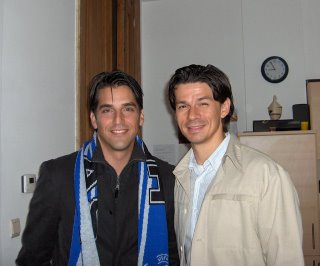 JK: Dionysios Trigylidas, aka "Denis", "Trigger" or "The Dionetian", blessed us with his legendary presence last Thursday night.
JK: Dionysios Trigylidas, aka "Denis", "Trigger" or "The Dionetian", blessed us with his legendary presence last Thursday night.
JK: In a desperate attempt to run away from the endless cloud and rain (yes, the weather is a recurring theme of conversation lately, but by god it has been hideous), we hopped on a train to the North Sea coastal town of Oostende. Miraculously, by the time we arrived the sky had opened up and we got to enjoy the Belgian coast with our friend the sun.
BUT, of course, there was a catch: so enthralled were we with being on the coast, that we missed the last train back to Brussels (well, that is my version; Mélanie "claims" I misread the train schedule... ;) ).
MK: I interject here to say he did indeed read the train schedule wrong but too manly to admit it.

JK: Stuck in Oostende for the night, and on a very tight budget (you get paid at the beginning of the month in Europe, hence end of month spending becomes rather tricky), we had the choice of either pulling an all-nighter and catching the first train back to Brussels, or else finding some sort of cheap room. With the youth hostel closed (it was already midnight), and every hotel either booked or far too expensive, we finally stumbled upon a "seniors' bar" -- i.e. a bar full of extremely old folk dancing to Flemish gigs -- that advertised cheap rooms for the night.
We got the room, and after sheepishly trudging through a group of partying octagenarians, settled in. The building lacked a shower for guests (presumably showers at the nearby beach could be used -- thanks for the convenience!), the tap in the bedroom spurted out a few drops of water and the walls could have been made from paper maché, but at least the sheets looked clean!
Fortunately, a superb beer bar was located directly across the street. It provided the perfect relief from our misfortune and an opportunity for me to go hog-wild tasting the variety of glory on offer (La Chouffe on tap! Bink Blonde, etc) while Mélanie daintily sipped chilled jenever. What a peculiar weekend adventure!
To see the photos, click here.
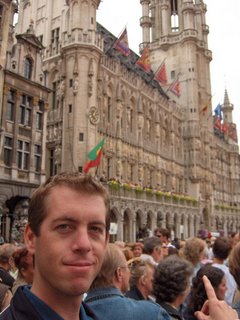 After an odyssey that included the 24hour postponement of his flight to Europe, a missed train in Paris, a missed second flight to Barcelona and a host of penalty charges, Ottawa's heroic Boyo (aka DJ Boyo, DJ Chicken Stardude, Pollo, Barnabitch) finally made it for a visit --albeit an abreviated one-- to Brussels. Boyo put on a brave and honourable face whilst here, belying the exhaustion and trouble he had endured. Clearly his years of weight training had made him strong.
After an odyssey that included the 24hour postponement of his flight to Europe, a missed train in Paris, a missed second flight to Barcelona and a host of penalty charges, Ottawa's heroic Boyo (aka DJ Boyo, DJ Chicken Stardude, Pollo, Barnabitch) finally made it for a visit --albeit an abreviated one-- to Brussels. Boyo put on a brave and honourable face whilst here, belying the exhaustion and trouble he had endured. Clearly his years of weight training had made him strong. MK: To break yet another dreary/rainy weekend in Belgium, we lifted our spirits by taking a day-trip to Mons (45 minutes by train from Brussels). We were pleasantly surprised by yet another "discovery" in this under-rated country: Mons is indeed a very attractive town. The Befry is captured in the pic below
MK: To break yet another dreary/rainy weekend in Belgium, we lifted our spirits by taking a day-trip to Mons (45 minutes by train from Brussels). We were pleasantly surprised by yet another "discovery" in this under-rated country: Mons is indeed a very attractive town. The Befry is captured in the pic below One interesting point: Mons happens to be the location of NATO's Supreme Headquarters of the Allied Powers in Europe (SHAPE). So lots of ex-pats and folk with crew-cuts to be seen!
One interesting point: Mons happens to be the location of NATO's Supreme Headquarters of the Allied Powers in Europe (SHAPE). So lots of ex-pats and folk with crew-cuts to be seen! Every two years, Brussels turns on the razzamatazz, struts its stuff, and delivers what even non-flower folk like me acknowledge is quite a spectacle: the Tapis de Fleurs (Bloementapijt for you Dutch speakers in cyberspace). The massive carpet, placed in the middle of arguably the mother of all European squares, is displayed for only four days on even numbered years in August. This year's themed pattern was "Middle Ages", which included nine elevated "rosettes", which spun slowly to give the whole thing an animated feel.
Every two years, Brussels turns on the razzamatazz, struts its stuff, and delivers what even non-flower folk like me acknowledge is quite a spectacle: the Tapis de Fleurs (Bloementapijt for you Dutch speakers in cyberspace). The massive carpet, placed in the middle of arguably the mother of all European squares, is displayed for only four days on even numbered years in August. This year's themed pattern was "Middle Ages", which included nine elevated "rosettes", which spun slowly to give the whole thing an animated feel.
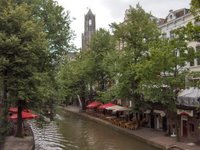
 JK: We went the Netherlands to visit our mate -- and the EPC's most eccentric employee -- Ms. Vanessa Matthews.
JK: We went the Netherlands to visit our mate -- and the EPC's most eccentric employee -- Ms. Vanessa Matthews.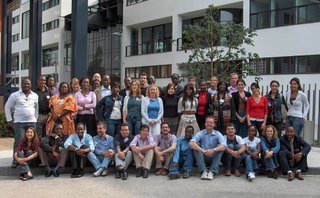
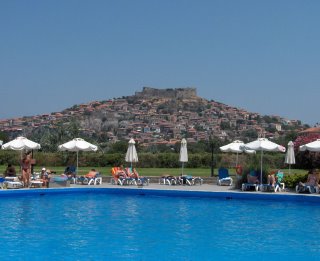 JK: A career training offer for Mel beginning the day after Jason and Carolyne's wedding meant we had to quickly revise our original plan to stay in Greece for a holiday after my brother's wedding.
JK: A career training offer for Mel beginning the day after Jason and Carolyne's wedding meant we had to quickly revise our original plan to stay in Greece for a holiday after my brother's wedding.


 Adieu - Au revoir - Good bye - Adios - Antio - Kwa Herini - Sayanara... There are no words we can write that will encompass our feelings about your departure. Belgium definitely won't be the same without both of you. Both of you were a major part of our best memories here. We wish you all the best in Colorado and hope to see you somewhere in the world again soon... Vancouver 2010??!! ;-)
Adieu - Au revoir - Good bye - Adios - Antio - Kwa Herini - Sayanara... There are no words we can write that will encompass our feelings about your departure. Belgium definitely won't be the same without both of you. Both of you were a major part of our best memories here. We wish you all the best in Colorado and hope to see you somewhere in the world again soon... Vancouver 2010??!! ;-)
 JK: My brother Jason and I are about 11 months apart in age. So, just for the sake of symmetry, our respective weddings have now taken place about 11 months apart too. Jason and Carolyne's (Topdjian) big day took place outside of Athens on Sunday, July 23 in a nice venue set amidst modern art and flora (Museum Vorre).
JK: My brother Jason and I are about 11 months apart in age. So, just for the sake of symmetry, our respective weddings have now taken place about 11 months apart too. Jason and Carolyne's (Topdjian) big day took place outside of Athens on Sunday, July 23 in a nice venue set amidst modern art and flora (Museum Vorre).
MK: Kidnappings, rape and forced labour are some of the horrors inflicted on children highlighted in a Reuters AlertNet poll released on Tuesday to identify the world's most dangerous places to be a child.
Here are some statistics for dangers faced by children around the globe:
(Reuters Source: Unicef, International Labour Organization.)
 MK: Mr. International Development, none other than Ian Rowe, blessed us with his powerful presence for almost a week in early July.
MK: Mr. International Development, none other than Ian Rowe, blessed us with his powerful presence for almost a week in early July.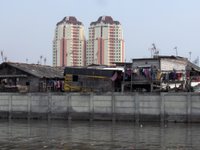 JK: In rather Forest Gump-like fashion, I was sent to Jakarta at the last minute to present a paper on European human security at a conference on South East Asian Security Cooperation. Although most of my time was spent in the conference room, I did have 1.5 days to explore the city. Unfortunately, there was no time to actually get out of the capital and explore the countryside.
JK: In rather Forest Gump-like fashion, I was sent to Jakarta at the last minute to present a paper on European human security at a conference on South East Asian Security Cooperation. Although most of my time was spent in the conference room, I did have 1.5 days to explore the city. Unfortunately, there was no time to actually get out of the capital and explore the countryside.
"Throughout their long and daunting journey from oppression and persecution to asylum and protection, and eventually to a place they can call home, refugees show incredible strength, courage and determination. Their journey is a dangerous and arduous one and every day spent in exile is a day too long.
But in every step of their journey refugees carry with them an unshakable, unrelenting hope. By hanging on to their hopes for basic survival, sustenance and protection, and for the chance to one day rebuild their lives, refugees defy all odds. As the UN Refugee Agency (UNHCR), we continue to be impressed by the tenacious hopefulness of refugees which, in turn, motivates us to leave no stone unturned in the fulfillment of our mandate, to protect them and to find durable solutions to their plight.
On World Refugee Day, we ask you to remember the millions of refugees under our care who are trying to pick up the pieces of once-peaceful lives. As different as they are from each other, one thing connects them all: hope for a better future and a chance to restore lasting peace to their lives.
Help us keep that flame of hope alive!"
While the number of refugees worldwide has reached a quarter-century low, UNHCR's annual tally of uprooted people rose in 2005 to nearly 21 million, with the rise to the refugee agency's expanding role in caring for internally displaced people (IDPs).
UNHCR draws inspiration from the perseverance of the world's estimated 20.8 million people of concern to the agency – including some 8.4 million refugees – and the fact they never give up hope despite losing everything. While global refugee figures had dropped 31 percent since 2001, returnees often still faced a bleak future back home. Greater focus is needed on ensuring countries move forward after conflict. The international community needs to devote much more attention to the transition between relief and development and to rebuilding societies ripped apart by violence so that refugees who go home, can stay home.
As an expression of solidarity with Africa, which hosts the most refugees, and which traditionally has shown them great generosity, the UN General Assembly adopted Resolution 55/76 on 4 December 2000. In this resolution, the General Assembly noted that 2001 marked the 50th anniversary of the 1951 Convention relating to the Status of Refugees, and that the Organization of African Unity (OAU) had agreed to have International Refugee Day coincide with Africa Refugee Day on 20 June. The Assembly therefore decided that, from 2001, 20 June would be celebrated as World Refugee Day. [Note: The OAU was replaced by the African Union on 9 July 2002.]
For more information, please visit: the United Nations and United Nations High Commissioner for Refugees.